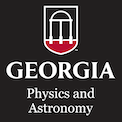Protein folding is studied within the context of two coarse-grained lattice models that separate all amino acids into only a few types. The hydrophobic-polar (HP) model is a simplified lattice protein model for simulating protein folding and for understanding many biological problems of interest. In this work, an "improved" model, the semi-flexible H0P model, was proposed by introducing a new type of "neutral" monomer, "0", i.e., neither hydrophobic nor polar and also taking into consideration the stiffness of bonds connecting monomers. Even though both models are highly simplified protein models, finding the lowest energy conformations and determining the density of states are extremely difficult. We applied replica-exchange Wang–Landau sampling with appropriate trial moves for determining the density of states of multiple HP and H0P proteins, from which the thermodynamic properties such as specific heat can be calculated. Moreover, we developed a heuristic method for determining the ground state degeneracy of lattice proteins, based on multicanonical sampling. It is applied during comprehensive studies of single-site mutations in specific lattice proteins with different sequences. The effects in which we are interested include structural changes in ground states, changes of ground state energy, degeneracy, and thermodynamic properties of the system. With respect to mutations, both extremely sensitive and insensitive positions in the protein sequence have been found. That is, ground state energies and degeneracies, as well as other thermodynamic and structural quantities may be either largely unaffected or may change significantly due to mutation. Moreover, comparison between the HP model and the semi-flexible H0P model have been performed based on two real proteins: Crambin and Ribonuclease A. We found that, compared with the HP model, the semi-flexible H0P model possesses significantly reduced ground state degeneracy, and rich folding signals as the proteins rearranging into native states from very compact structures at low temperatures. We calculated the free energy vs end-to-end distance as a function of temperature. The HP model shows a relatively shallow folding funnel and flat free energy minimum, reflecting the high degeneracy of the ground state. In contrast, the semi-flexible H0P model has a well developed, rough free energy funnel with a low degeneracy ground state. In both cases, folding funnels are asymmetric with temperature dependent shape.
Index words: Monte Carlo simulations, Wang–Landau sampling, Replica-exchange Wang–Landau sampling, protein folding, protein folding funnel, hydrophobic-polar model, HP model, semi-flexible H0P model, protein mutation


